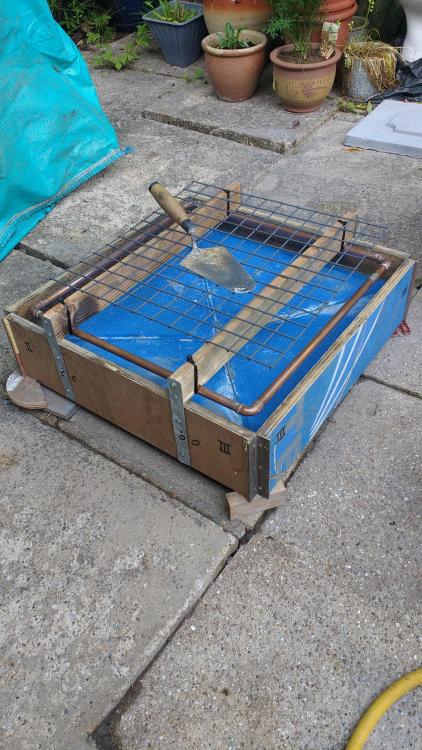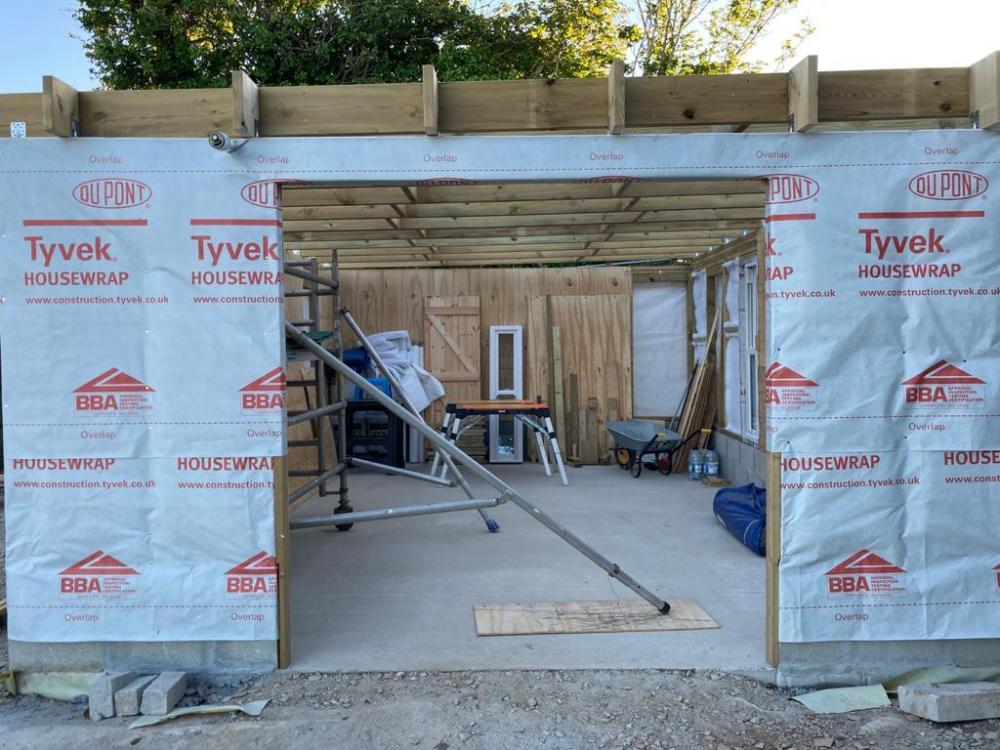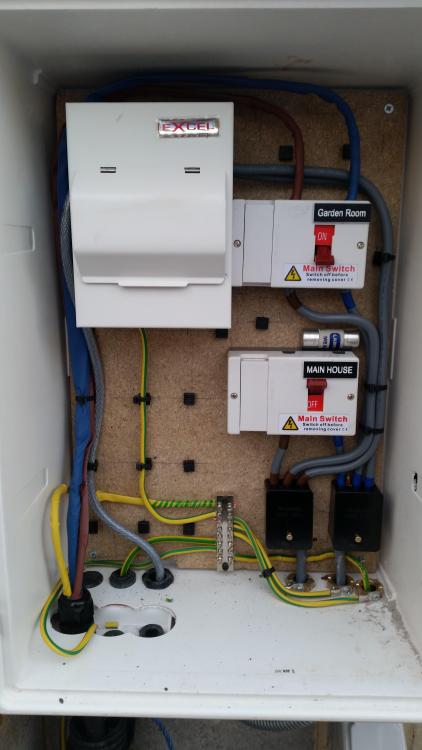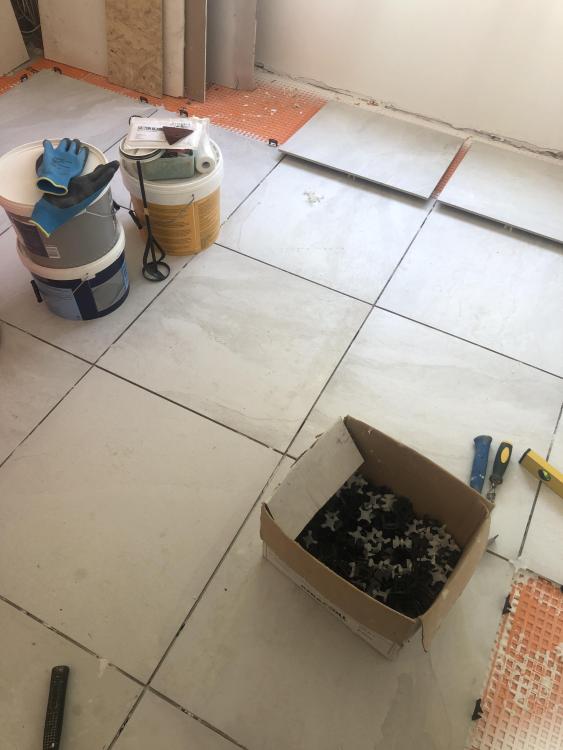Leaderboard
Popular Content
Showing content with the highest reputation on 06/13/21 in all areas
-
Yesterday we worked so hard - all panels painted back and front and fixed on now. It's looking so good and I took some pics from towpath side too. The planting on the bank is looking good now too, kind of wildflower with lots of fox gloves. We did discover a baby bunny that obviously had tried to go under the motorway barriers and got it's head stuck and pretty much decapitated itself ? There will be a gravel limestone (we think) path then all the way along as the fence will continue outside our utility door too and all the way up. As yet there is no membrane the other side but the earth isn't exactly touching but it is preventing any fall off or gravel from the embankment tumbling down. I know it won't be to everyone's taste but we are happy.4 points
-
So when is relandscaping a garden or installing a swimming pool financially viable? Things are financially viable when the purchaser has the finances available to purchase it. End of. I think you mean economically justifiable, which is not always the reason to decide to make a modification to a home. Especially those with zero payback like putting in a hot tub or enlarging the patio. To give another view - we put a whole roof of solar on our house (GB sol RIS, picture attached) cost about 16k£ but the whole enerphit+ renovation has added double the value onto our house that it cost to do, undeniably in part due to the current crazy market, but in part because interest in sustainable designed houses are suddenly on the up* in our area and nothing signals this more clearly than a whole roof of solar (in a conservation area where this was not permitted a couple years ago). This is not going to be the common case I know, but done well I do see even the economic value being more than just the reduced electric bill. * I was very surprised - the estate agents we spoke to this week knew very well what a passive House is; turns out in large part because customers are taking about ours as a reference point for the area.2 points
-
2 points
-
The last six weeks have been a bit of a slog but have finely got the roof finished, PV fitted and first floor cladding and windows fitted. Scaffolding came down yesterday 3 weeks longer than planed big hole in wallet. First floor chipboard flooring down so will start on the ground floor windows and studwork. But now back to real work as well.2 points
-
I have 5 solar Velux working from a single remote - it is the digital version with a screen, I have a few different programs set up to do different things. I bought the digital version from Ebay as Velux no longer sell them - they are now selling for around £100 but I only paid £25 for it, Velux are pushing the phone / tablet app version that requires a hub box or the climate control box. I do believe that you can pair the "Standard" open / close button remote to a number of windows - I have never used mine (I have 5 spare) Also I originally had 4 solar windows and 1 standard as we didn't think we would be opening it much - I bought the kit to convert it to solar - easy to do and the cost is about the same as paying the extra for the solar version.1 point
-
Ready for the next one once the copper pipe has stuck to the cross members. Cleaned the mould out and re-siliconed the internal corners: Found a bit of slightly bigger mesh than before, not galvanised, so gave it a quick coat of zinc spray. Sand and dye already in the mixer: Cement and lime measured out ready.1 point
-
Better sorting it out now than ignoring it and having to deal with the consequences later, it’s really important to get the basics RIGHT, insulation where it needs to go minimise cold bridging get the air tightness sorted try and get everything to fit standard sized materials - nothing more annoying than having to cut perfectly good sheets of plaster board down because the studs were put in the wrong place…. the list is endless but ignoring it will result in things like mould on the walls and depressing Electic bills……. I know this as I have seen people cut the wrong corners and then regret it. In my opinion your better of going with a great FABRIC FIRST approach and living in a shell than shine over shite with a fancy kitchen……..1 point
-
@Faz Loving your pictures and progress, you are a way ahead of me and your pictures are really helping me visualise what I'll be needing to do later on. Your insulation between the rafters, are you insulating right down the attic truss void aswell? Curious, as I've not decided as yet. Good work sir.1 point
-
That’s a fairly standard way of doing the walls by many timberframe companies. I wouldn’t worry too much.1 point
-
I can’t see how changing it to masonry would be better as the timber will have more insulation quality’s than masonry and be less likely to attract condensation…. (I think…..) if the timber stud walls are not structural then they should not have been built until the floors were finished (I think……) that way there would have been insulation under them already.1 point
-
If the taping is continuous and goes from sheet to sheet it will act as a VCL (vapour control layer ) and airtight layer all in one at this point and would not need another. Some people like to add in a layer of polythene as a vcl just to be 100% sure. adding another layer of inundated plasterboard does not act as a vcl ( I think) but will stand corrected if need be1 point
-
1 point
-
1 point
-
1 point
-
There is a LOT of stuff going on here and it’s going to be a messy thread if lots of people start answering multiple questions, it may be better to start again and ask a single question at a time and then move onto the next question…… and try and ask the questions in the right topic area. Hopefully this will entice people to provide some helpful answers. I will try to come back and chip in something useful soon.1 point
-
As far as I’m aware you shouldn’t be doing anything on site until your planning and bw are through as well as the fact you need your cil exemption approved before starting . Any invoices dated before pp is granted won’t be eligible for reclaim1 point
-
That’s out of date info Modern panel manufacturers are on top of that, plus the in-roof trays allow for quite a bit of convection airflow. They’re open top and bottom / side to side. Very little to argue over there imho and that from being on roofs fitting them 1st hand.1 point
-
Found them if anyone else wants them- https://www.wehandleitall.co.uk/excel-architectural-hardware-precision-am60-magnetic-tubular-latch---60mm---satin-stainless-steel-4226-p.asp Precision AM60 magnetic tubular latch1 point
-
Either cut the plywood to land on existing supports or add extra supports. probably quicker to cut the ply.1 point
-
1 point
-
Always 3. Cheaper doors will bow in the middle and bind on the door stop without.1 point
-
You can, subject to appropriate skills / certifications and safety approaches, do what you like after the meter but generally NOT in the meter box. Many of us here have put second meter boxes adjacent to the main one, taken a feed into that and then split it out using and isolating switches to the various consumer units around the building. Here are our two, when the meter was installed I got the power company (In out case UKPN) to install to the isolator, bottom right and then we could do the work in the second cabinet with the power isolated anytime we like. The second cabinet has the two building isolators and a local service (garden power sockets & lighting, car charging and drainage services) consumer unit.1 point
-
I bought some of these a while back. They are genuine ones and work fine. https://www.ebay.co.uk/itm/1626922527141 point
-
Normal wiring regs. It is only a special location if it contains a bath or shower, so no special requirements for a room with a wc, no different to a kitchen.1 point
-
That’s why we use the i3 system, it’s not massively different but comes in under £10 per metre inc VAT.1 point
-
Strange, they're usually not mandated until foundations are 1.5m deep. Heave can cause issues as the ground reuptakes moisture.Ideally you'd have a good idea f the full soil strata and site history. But as that would mean a huge expense, only a very blunt 'worst case' tool is available. Because I'm an SE my BCO just left me to it on the structural things. He pointed towards a nearby tree but due to the local geography I assured him it wouldn't cause issues.1 point
-
1 point
-
I am doing this at the moment and yours looks like a proper pita with that bracing! As said above get gun grade foam and fill in any small gaps. Do you need to leave a void of 25 - 30mm to the membrane? Generally specified to avoid condensation. I bought this tape - Gocableties Aluminium Foil Adhesive Insulation Tape 50metres x 100mm (4") Silver Premium Metal Roll: Amazon.co.uk: DIY & Tools My technique is to cut it to size and a bit and use a bit of stud and a lump hammer to smack it into place while swearing at the chippie with each hammer blow for not propping the trusses true plumb. Buy some insulation saws (I got the Bosch jigsaw blades) as it cuts down dust. My other finding is that it is worth taking the time to keep your work area clear of scrap - it will pile up and get in the way otherwise.1 point
-
You need to buy an expandable foam gun and gun grade expandable foam. make sure that all the insulation is flush with the face of the wood, check with a long straight edge over a few at a time as it will make a BIG difference to how well the 25mm stuff goes on.. are you having a service void ? Either way I would be filling ALL gaps with foam, cut it back and silver foil tape over all joints before starting the over boarding. if you use 100mm tape it should bridge right the timber - it will stick to timber but better to foil faced boards. there are numerous threads on how to do this… you should read them before starting the detailing.1 point
-
Mine's been wrapped in membrane since the start of last winter. Perfectly fine and I'm only now continuing with the cladding which I'm doing 'in my spare time', so probably be 'part-wrapped' for 3 more winters at this rate Seriously consider some of the closed cell spray-on insulation kits to boost draught-proofing and insulation in both the roof and the walls Quick, easy and effective. Wish I had done mine ? May well attempt a retro fit somehow if I can inject from inside.....1 point
-
Hello @834843 " "Hi folks, I'm in the process of buying a first floor flat in SW London. It's a Victorian end-of-terrace house, about 950 sq ft, and it needs complete renovation..." To all.. a few general points when thinking about altering flats. The top floor flat can be less problematic to convert from a structural point of view. Tenement flats or similar can be tricky, as are blocks of three storeys and more. Some blocks have a shop on the ground floor that has been opened up to form a more clear / open plan floor area. The first floor flat above a shop like this is the most difficult to tackle when you want to knock down a wall. What can happen is that when you knock down a wall you start to introduce point loads (from the beam you put in if required) and these can suddenly change the load distribution on say the shop beams below. Often for the attic (not high rise) you find the roof spans front to rear, this helps to hold the walls in place. But.. in some cases the internal walls in the top flat provide stability to say a gable wall at the end of the terrace. This can be more of an issue say in England etc cf Scotland where sarking boards are used. Sarking boards stiffen a roof at rafter level. In laymans terms this means (sarking used) that you turn the roof into a couple of big beams that can more easily transfer say wind load to where it is more esily dealt with. In terms of structural design it's important to consider how what you do will impact on the whole building, not just your flat. This means that you often want to see in the flat below, or if you have mid floor flat then you also want to see what is above. What you are looking for is the actual layout, alterations that have a completion certificate but also as importantly, alterations that have been carried out with no approvals... cowboys. Apart from the safety issue there is an old expression has some merit..last man (person) on the job gets the blame. If you are budgeting on the basis that you may turn a profit by making an alteration it may be worth paying / asking for some advice first. To keep the cost of this down one of the best ways is to put together a small info document. Often you can find estate agents floor general plans on line showing the properties above / below that have come on the market. Take some extra photos of the inside / outside of the building ( the bit the agent has not included) etc and put this all in a document...the more info the better. This can really help someone give you initial advice / pointers.. which is often free if they feel you have put effort into it. If you write to say an SE and say "how much for a loft conversion" you'll just get a genric response. @834843" In regards to the type of work, is an architect essential (vs. an architectural technologist vs. structural engineer)? The essential thing is to find someone that has experience. One key here is to appreciate that every job is different although all the flats may look the same as the next block. Much can be lost on the builder's labour charges if the structural connections are too complicated, or the insulation details and materials can't be bought off the shelf (you often need to pay premium for a small quantity), you can't physically get a beam up the stairs and into the attic and so on. I have found that many experienced Architects / Architectural Technologists have a sound understanding of the structural concepts and SE's reciprocate. There is much cross fertilisation between the professions. All the best with your new home.1 point
-
Update: A few weeks later and a lot wiser about the static caravan market. The big discovery is that it is a two-tier market. Many vans above £10k are sold sited which effectively means tied to ongoing rental and position in a caravan/holiday park. If the park operator feels a static van is too old and bad for the reputation of the park it will be discounted for sale to an offsite owner. We have encountered a few dual priced vans with a 30% difference depending on a offsite or onsite sale. Static caravans start to feel and smell old at about 10 years which currently equates to £10k offsite. 14ft vans are rare but seem much bigger than standard 12ft models. Blown air gas central heating requires a gas safe fitter with special qualifications. A mid sized static caravan has double the internal area of the largest touring (towable) caravan. Touring caravans are more salable at the end of a build and the offsite static market is smaller than park site static sales. Statics can be difficult to deliver particularly 14ft wide models though if possible they can be dismounted off an HGV in 15 mins and then maneuvered onto a tight site with a separate chunky 4x4 vehicle.1 point
-
You are legally obliged to comply with and assist HSE and fully answer any questions they have. If they pay you a visit just be as helpful as possible and immediately implement any recommendations. If they choose to prosecute they have a very high conviction rate, and the majority will plead guilty to the breach (when they realise that the penalty will be more severe if found guilty in court).0 points
-
0 points
-
Deffo support the ply edges on joist centrelines. Even more important on the roof than the walls. You'll have to add a nom 220mm ply strip along the front. Have you already bought your roof covering and taken that into account? (I'd have extended the overhang a good full board at least and had a bit of an overhang supported by posts. Great for a bit of craft spraying etc out side. Shade too from full ?). Enough room for an outside rocking chair and somewhere to rest the shotgun is good! ?0 points
-
Generally you are not allowed to put any additional equipment in the meter box. You should feed new stuff from the existing consumer unit or fit new things next to it0 points
-
0 points
-
0 points
This leaderboard is set to London/GMT+01:00




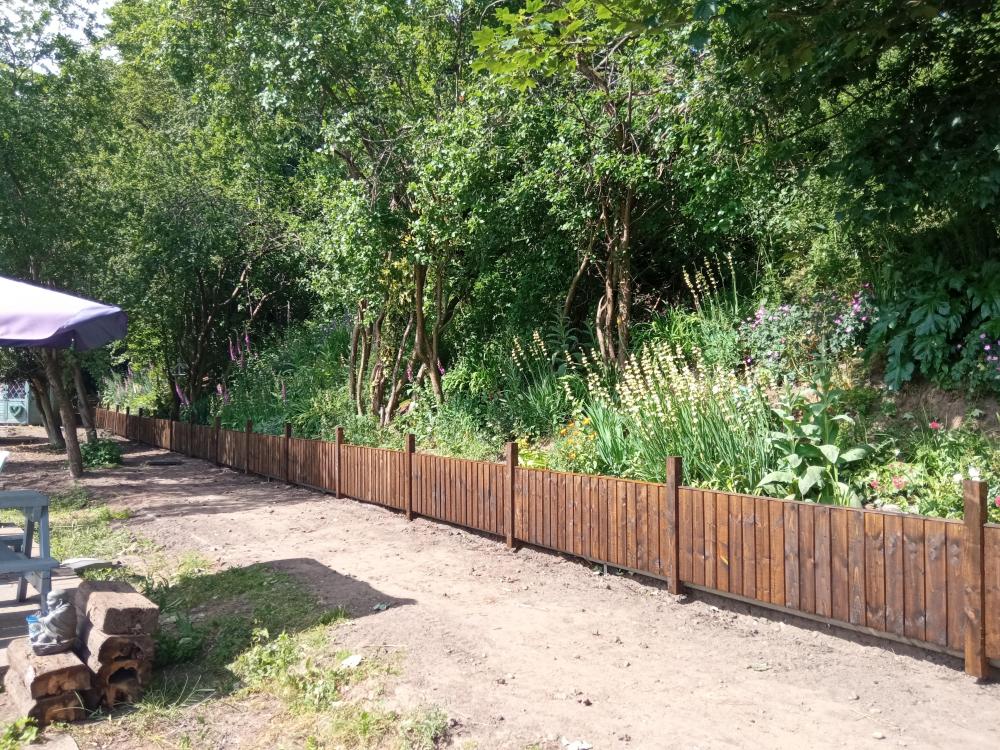
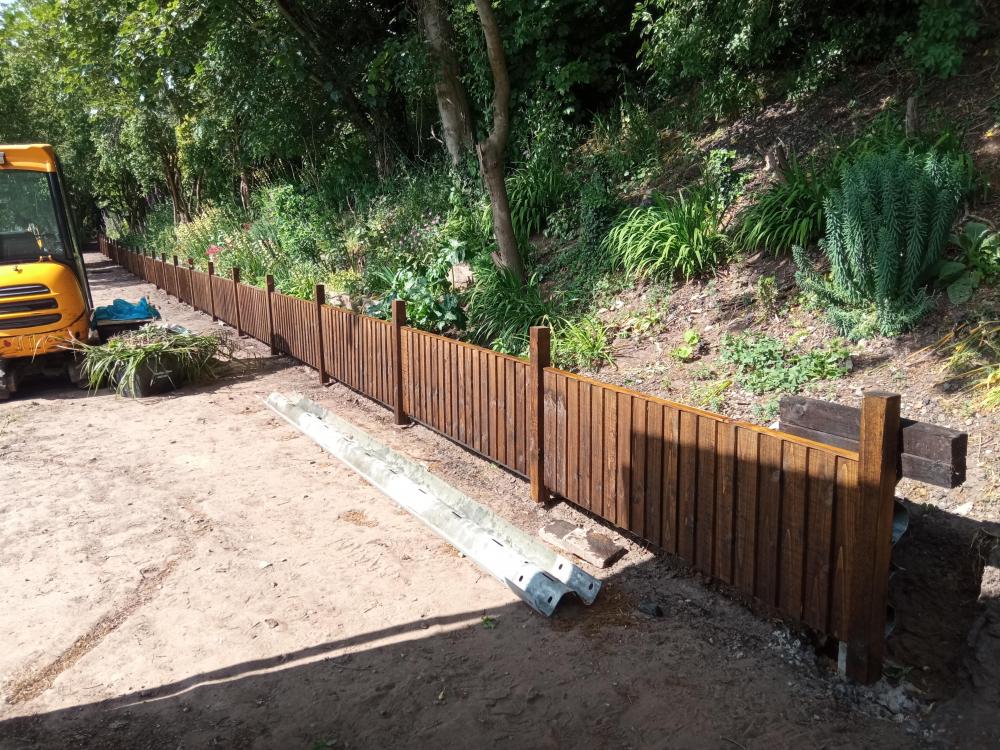
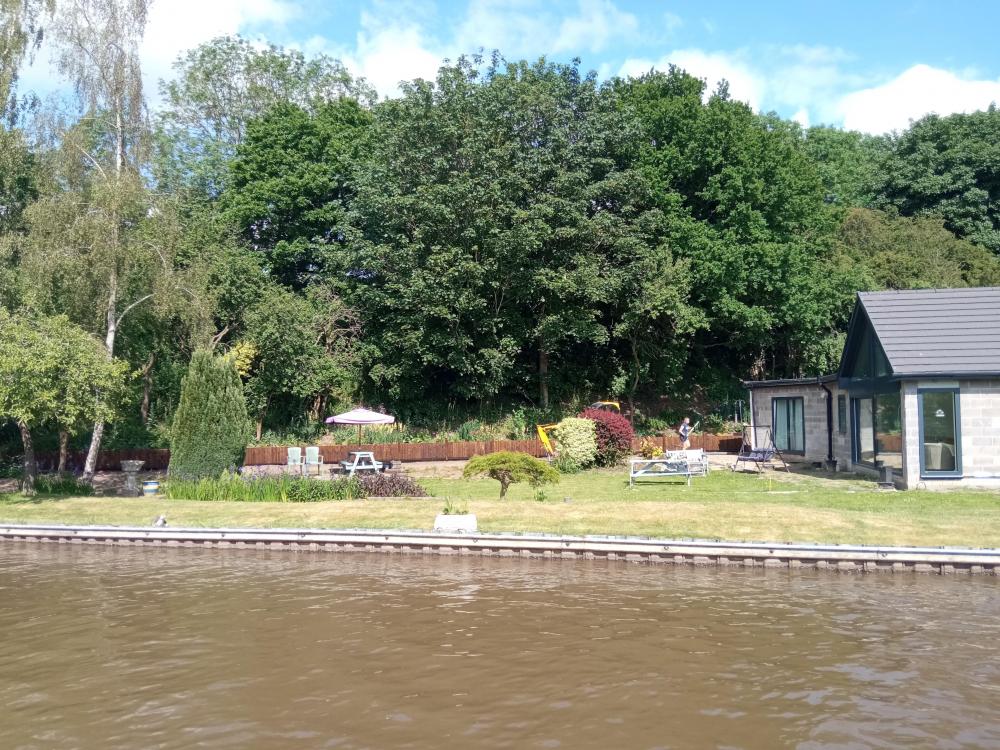
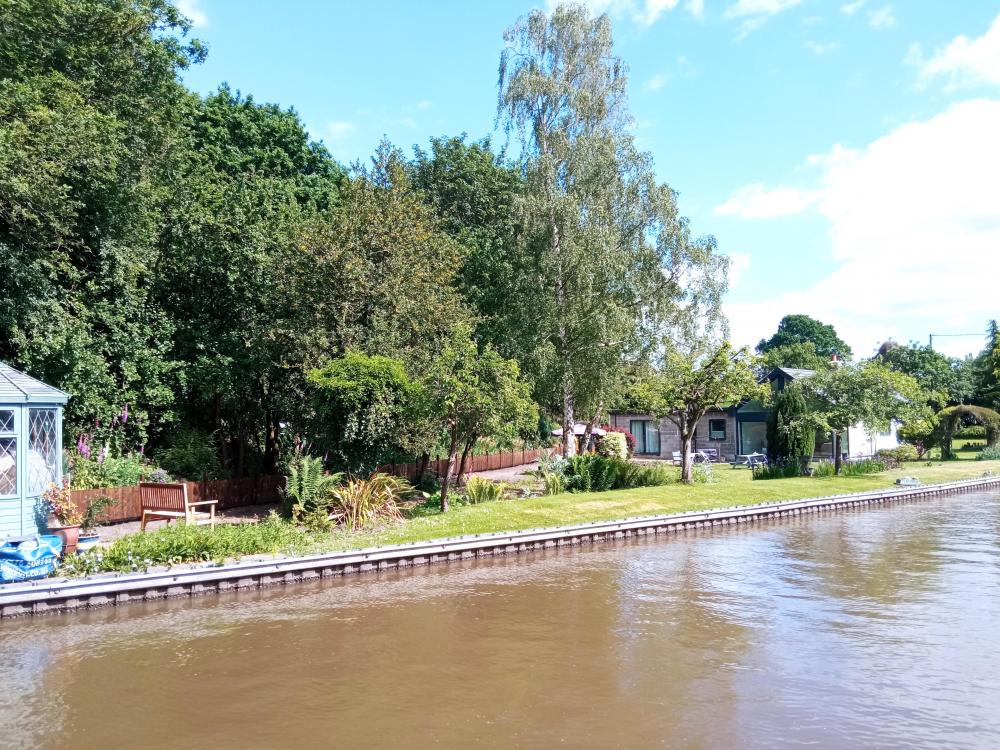
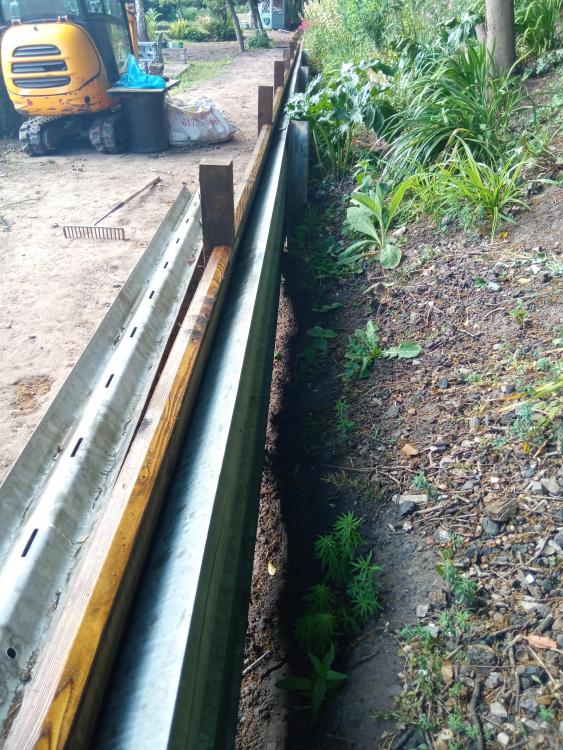


.thumb.jpg.e748c1d9c24811808445ab57b5cef39a.jpg)
.jpg.6cdaff81173789c827fabecbf092dd93.jpg)
.jpg.b2130e0a72401510f10171d96c368b39.jpg)
.jpg.4714c386e7e38c2b68329f4c127490ac.jpg)
.jpg.aac0f412de534a351e5caa14a27dc157.jpg)
.jpg.81123dd7bb536558e24516b5f49f0e91.jpg)
.jpg.fec9de6e950889b51c652d8dee88cb29.jpg)
.jpg.c6026f2346db4050e90377a43311a7bb.jpg)
